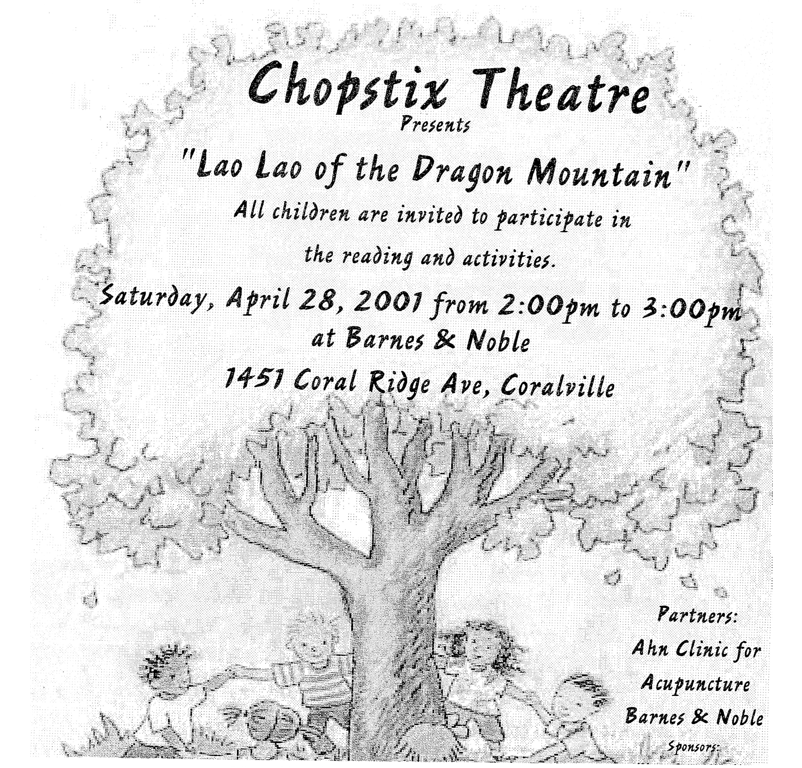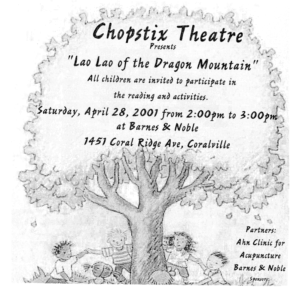The following is written by Asian Alumni and Student Oral History Project Intern Jin Chang
This a multi-part series reconstructing the history of the Asian American Coalition, a pan-ethnic Asian American student group from 1998-2017. This second blog post covers the Asian American Coalition’s early attempts to define their new student organization. It traces out their early attempts to identify their purpose, the activities they did as friends, and their engagement in socio-political activism from 1998-2002.
The Asian American Coalition had multiple purposes in its first four years of its existence. The group existed as a social, political, and educational organization throughout this time. While the students emphasized different aspects of the organization in different years, Asian American Coalition always had an eye towards the future.
As a social organization, the early iteration of the Asian American Coalition differed from the structure of a typical student organization at the University of Iowa: it had both graduate and undergraduate students involved, with an even ratio of graduate to undergraduate students. This meant their social events such as bowling nights, picnics, or general parties had both undergraduate and graduate students together. Some of the undergraduate students spoke fondly about having a built-in mentor from this arrangement. Meanwhile, the graduate students saw the inclusion of undergraduates as a way to ensure the future of the organization. In other words, the graduate students took the lead in running many aspects of the organization with the intention of handing off the Asian American Coalition to the undergraduates.
Here alumnus Kim Long discusses what it meant to have a graduate mentor in the Asian American Coalition:
This structure of mentorship enabled the Asian American Coalition to be a political organization. One of their first political goals was the creation of an Asian American Studies Program. The stated purpose of this academic program was to provide courses that reflected the history and culture of the Asian American community at the University of Iowa specifically. However, the graduate students that were involved with the Asian American Coalition saw even more potential with these courses as they viewed them as a way to politicize the undergraduate cohort of the organization to maintain their political agenda.
Beyond the classroom, the political nature of the Asian American Coalition can be seen immediately through its name. Their goal was to be an “umbrella organization” for Asian and Asian American students throughout the university. For these students, the idea of an “umbrella organization” meant they would be there to support other Asian students in their activities and times of need while providing a pan-Asian home for those that did not quite fit the mold of the other Asian organizations. One clear example this coalitional support was after an earthquake that devastated Taiwan in 1999, the Asian American Coalition offered their support to the Taiwanese Student Association to fundraise for their community. The original student leaders felt the name, Asian American Coalition, captured this notion of an “umbrella organization.”
While the Asian American Coalition primarily focused their efforts in building the future Asian community at Iowa, they also supported other multicultural organizations. For instance, the Asian American Coalition stood behind Black, Native, and Latino student groups on campus to maintain their unique cultural houses, now called Afro-House and the Latino Native American Cultural Center, rejecting a University plan to house all cultural centers in one residence hall. This multi-racial solidarity also meant that when the Asian American Coalition began advocating for the creation of an Asian American Cultural Center, the Black, Native, and Latino student groups on campus stood in solidarity with the Asian American Coalition.
Hear former student member Rosalind Sagara speak on the necessity of solidary between multicultural student groups on campus:
Finally, the Asian American Coalition served as an educational organization as they had a goal to spread cultural awareness throughout the larger community beyond the University. One of the first things many of the founding members of the Asian American Coalition spoke about was this feeling of constantly being watched in Iowa City because they were Asian. They saw the Asian American Coalition as an organization that could introduce the general public to the idea that Asian people lived in Iowa. They primarily did this through a sub-group of the Asian American Coalition called ChopStix Theatre.
Chopstix Theatre was a small group started by Asian American Coalition Members. They created puppet shows and reenacted children’s stories from various Asian countries as well as Asian American specific stories. They performed at the Iowa City Public Library, the Iowa Children’s Museum, Barnes & Noble, and at cultural festivals for kids. The goal was to introduce Asian culture and people to the children of the predominately white community in the Iowa City area with the hope that these fun stories would help kids grow into accepting adults.
Listen to alumnus Omega Dancel talk about the origins and purpose of Chopstix Theatre:
The Asian American Coalition was a social group, a political organization, and an educational theatre troupe. They were always future oriented, planning ahead to prolong the life of the organization and make an impact for Asian students living in Iowa. The graduate students that started it saw the potential for it to be a political organization, but they recognized social activities were important to build community. They sought Asian American Studies as a way to cultivate future political leaders for the Asian American Coalition. They created relationships with other Asian organizations and multicultural groups to respond to future events. They felt unwelcomed in the community and tried to find ways to change this by bringing Asian culture to children in the Iowa City Area. In short, the Asian American Coalition had the goal of creating a better Iowa for Asian Americans and the community at large.
To further explore the history of the Asian American Coalition, visit Special Collections & Archives to view the Asian American Coalition Records, RG02.0003.052

